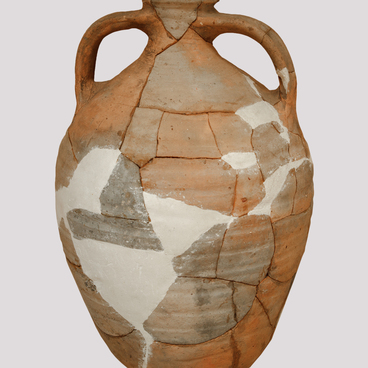For a long time, a man’s suit was on a par with a woman’s in verve and an abundance of decorative details. Casual men’s suits were sewn of cloth and wool, and ceremonial suits were made of silk, velvet, brocade, and fur.
A ceremonial men’s suit of the late 18th century traditionally consisted of several elements of clothing: culottes, a caftan, a vest, stockings and shoes with buckles. Culottes are short pants that fastened under the knee, which were included in the wardrobe of the upper class only. They were worn with silk stockings. The stockings were fastened with a garter system and were often decorated with various designs, including the famous seams.
Outerwear, as a rule, was decorated with rich embroidery or weaving. Gaidukov’s caftan is made of dense silk fabric, decorated with patterns of silver thread along the cuffs and cut. The main part of the caftan is silver flies on a pink or red field. Over the long years of storage (the costume entered the museum in 1889), the color of the fabric has changed. Only in the seams of the caftan one can notice fragments of a red-crimson hue. The vest is long, made of less dense fabric. Special whalebone plates were inserted into its hemlines, slightly protruding them.
High-heeled shoes are made of leather, covered with matching fabric on top, decorated with buckles and embroidery. The buckles at the shoes are decorated with rhinestones. If necessary, the buckles could be stored in a special case. This was in line with the fashion of the late 18th century.
On the inner surface of the silk stockings, the stamp “Reval Customs 1796” has been preserved. A similar stamp speaks of the foreign origin not only of the stockings, but of the entire costume. Apparently, it was ordered abroad and brought to the Russian Empire through Reval (modern Tallinn). The general characteristics of this ceremonial costume speak of its high cost. Only a person with serious financial resources could afford such clothes.
According to early museum documentation, this costume belonged to the hereditary honorary Vyazma citizen Gaidukov. The Gaidukov family in the late 18th- early 19th centuries belonged to the merchants of the 1st guild. To be ranked among the 1st guild, it was necessary to pay capital tax over 15 thousand rubles. It should be noted that in the middle of the 19th century there were only five merchants of the 1st guild throughout the Smolensk province.
A ceremonial men’s suit of the late 18th century traditionally consisted of several elements of clothing: culottes, a caftan, a vest, stockings and shoes with buckles. Culottes are short pants that fastened under the knee, which were included in the wardrobe of the upper class only. They were worn with silk stockings. The stockings were fastened with a garter system and were often decorated with various designs, including the famous seams.
Outerwear, as a rule, was decorated with rich embroidery or weaving. Gaidukov’s caftan is made of dense silk fabric, decorated with patterns of silver thread along the cuffs and cut. The main part of the caftan is silver flies on a pink or red field. Over the long years of storage (the costume entered the museum in 1889), the color of the fabric has changed. Only in the seams of the caftan one can notice fragments of a red-crimson hue. The vest is long, made of less dense fabric. Special whalebone plates were inserted into its hemlines, slightly protruding them.
High-heeled shoes are made of leather, covered with matching fabric on top, decorated with buckles and embroidery. The buckles at the shoes are decorated with rhinestones. If necessary, the buckles could be stored in a special case. This was in line with the fashion of the late 18th century.
On the inner surface of the silk stockings, the stamp “Reval Customs 1796” has been preserved. A similar stamp speaks of the foreign origin not only of the stockings, but of the entire costume. Apparently, it was ordered abroad and brought to the Russian Empire through Reval (modern Tallinn). The general characteristics of this ceremonial costume speak of its high cost. Only a person with serious financial resources could afford such clothes.
According to early museum documentation, this costume belonged to the hereditary honorary Vyazma citizen Gaidukov. The Gaidukov family in the late 18th- early 19th centuries belonged to the merchants of the 1st guild. To be ranked among the 1st guild, it was necessary to pay capital tax over 15 thousand rubles. It should be noted that in the middle of the 19th century there were only five merchants of the 1st guild throughout the Smolensk province.



